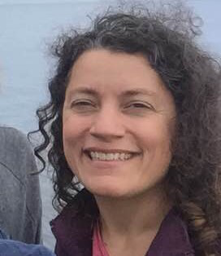Asian Clam (Corbicula fluminea) on Dec 15, 2011
Submitter does not have a specimen
EDRR Status: Local expert notified
Description of specimen
Several empty shells of Asial Clams noted with empty shells of Anodontia oregonensis on exposed mud flats in
September 2008.


Dear Bruce,
Thanks for your report of Corbicula fluminea, or Asian Clam. These invasive clams are a widespread in the United States.
The first collection of C. fluminea in the United States occurred in 1938 along the banks of the Columbia River near Knappton, Washington (Counts 1986). Since this first introduction, it is now found in 38 states and the District of Columbia. Corbicula fluminea was thought to enter the United States as a food item used by Chinese immigrants. Or, it may have come in with the importation of the Giant Pacific oyster also from the Asia.
The most prominent effect of the introduction of the Asian clam into the United States has been biofouling, especially of complex power plant and industrial water systems (Isom et al. 1986; Williams and McMahon 1986). It has also been documented to cause problems in irrigation canals and pipes (Prokopovich and Hebert 1965; Devick 1991) and drinking water supplies (Smith et al. 1979). It also alters benthic substrates (Sickel 1986), and competes with native species for limited resources (Devick 1991).
I have also seen C. fluminea in the Willamette Valley, in particular in the Willamette River they seem very common. However, The USGS National Invasive Species Database ( http://nas.er.usgs.gov/queries/factsheet.aspx?speciesid=92 ) does not show any records from any of the Willamette Watersheds. It is useful to have this report so it may be included in distribution maps and there can be increased awareness of this invader.
For more info this fact sheet is very reputable: http://nas.er.usgs.gov/queries/factsheet.aspx?speciesid=92
I will forward your report to the Oregon Department of Fish and Wildlife, the Oregon State Marine Board, Army Corps of Engineers, and the USGS National Invasive Species Database.
Thanks again Bruce!
Tania
Tania Siemens
WISE Program Coordinator (Watershed and Invasive Species Education)
Oregon Sea Grant Extension
Oregon State University
tania.siemens@oregonstate.edu
541-914-0701
Tania Siemens
Dec. 15, 2011, 9:19 p.m.